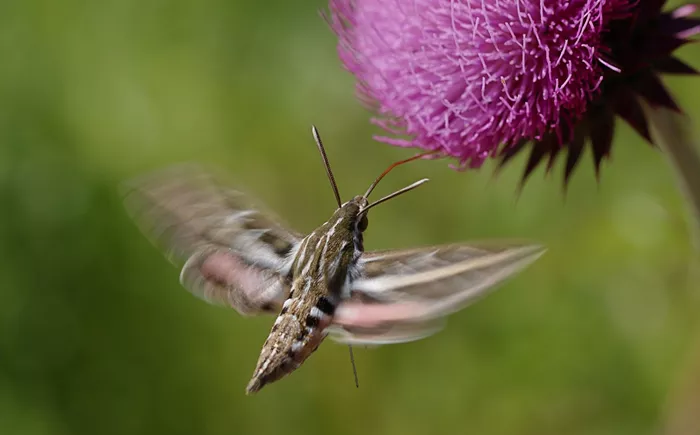A groundbreaking study by NatureServe has revealed that over 22% of native pollinators in North America are at high risk of extinction. This comprehensive assessment, the first of its kind, examined nearly 1,600 species, including bees, butterflies, beetles, moths, flower flies, bats, and hummingbirds. The findings highlight an urgent biodiversity crisis that threatens ecosystems and food production.
Key Findings
One in five pollinators at risk: About 22.6% of species face an increased extinction risk, emphasizing the urgent need for conservation efforts.
Bees most endangered: Nearly 34.7% of native bee species are threatened, with leafcutter and digger bees at the highest risk.
Bats vs. hummingbirds: All three pollinating bat species in North America are endangered, while hummingbirds currently face a lower risk.
Geographic hotspots: The American Southwest is home to the highest number of endangered pollinators, largely due to climate stress and habitat loss.
Main threats: Climate change, agriculture, habitat destruction, and urban development are the leading dangers to pollinators, varying across different regions.
Why This Matters
Pollinators play a crucial role in food production and biodiversity, contributing over $15 billion annually to North American agriculture. Their decline could disrupt food supplies, harm plant reproduction, and negatively impact ecosystems. Without immediate conservation action, the loss of pollinators may have far-reaching consequences for wildlife and human livelihoods.
Call to Action
For Policymakers
- Incorporate at-risk pollinators into State Wildlife Action Plans to secure funding and legal protections.
- Strengthen conservation policies to address habitat destruction and climate-related challenges.
For Land Managers
- Preserve habitats such as grasslands, shrublands, and woodlands that support pollinator communities.
- Implement sustainable practices to mitigate the impact of agriculture, urbanization, and climate change.
For the Public
- Reduce pesticide use and plant native flowers to create pollinator-friendly spaces.
- Support conservation initiatives that aim to protect pollinators year-round.
Expert Insights: A Conversation with Dr. Jaret Daniels
Dr. Jaret Daniels, curator of Lepidoptera at the Florida Museum of Natural History’s McGuire Center, shared his perspective on the future of pollinators, particularly butterflies in Florida.
Q: How are Florida’s butterflies being affected?
Florida is home to the most diverse butterfly population east of the Mississippi. However, urbanization and habitat loss threaten many species. Some butterflies, particularly those in South Florida’s pine rocklands and tropical hardwood forests, face significant survival challenges.
Q: How can Florida residents help?
Traditional Florida yards rely heavily on turfgrass and ornamental plants, which provide little value to pollinators. Homeowners can help by planting native flowers, reducing lawn space, and avoiding pesticide use. Even small changes, like container gardens on balconies, can create valuable habitats.
Q: What broader conservation efforts are needed?
Pollinator conservation must extend beyond parks and nature reserves. Roadsides, urban yards, and farmland should be managed to support pollinators. A notable initiative in Florida involves planting milkweed along highways to benefit butterflies and nearby farms. Since pollinators travel great distances, improving these areas can enhance biodiversity on a larger scale.
Q: Why are native pollinators important when honeybees are widely used?
While western honeybees provide essential pollination services, they are vulnerable to pests, diseases, and climate change. Relying solely on honeybees is risky—much like investing all savings in a single stock. A diverse range of pollinators ensures a more stable and resilient ecosystem.


